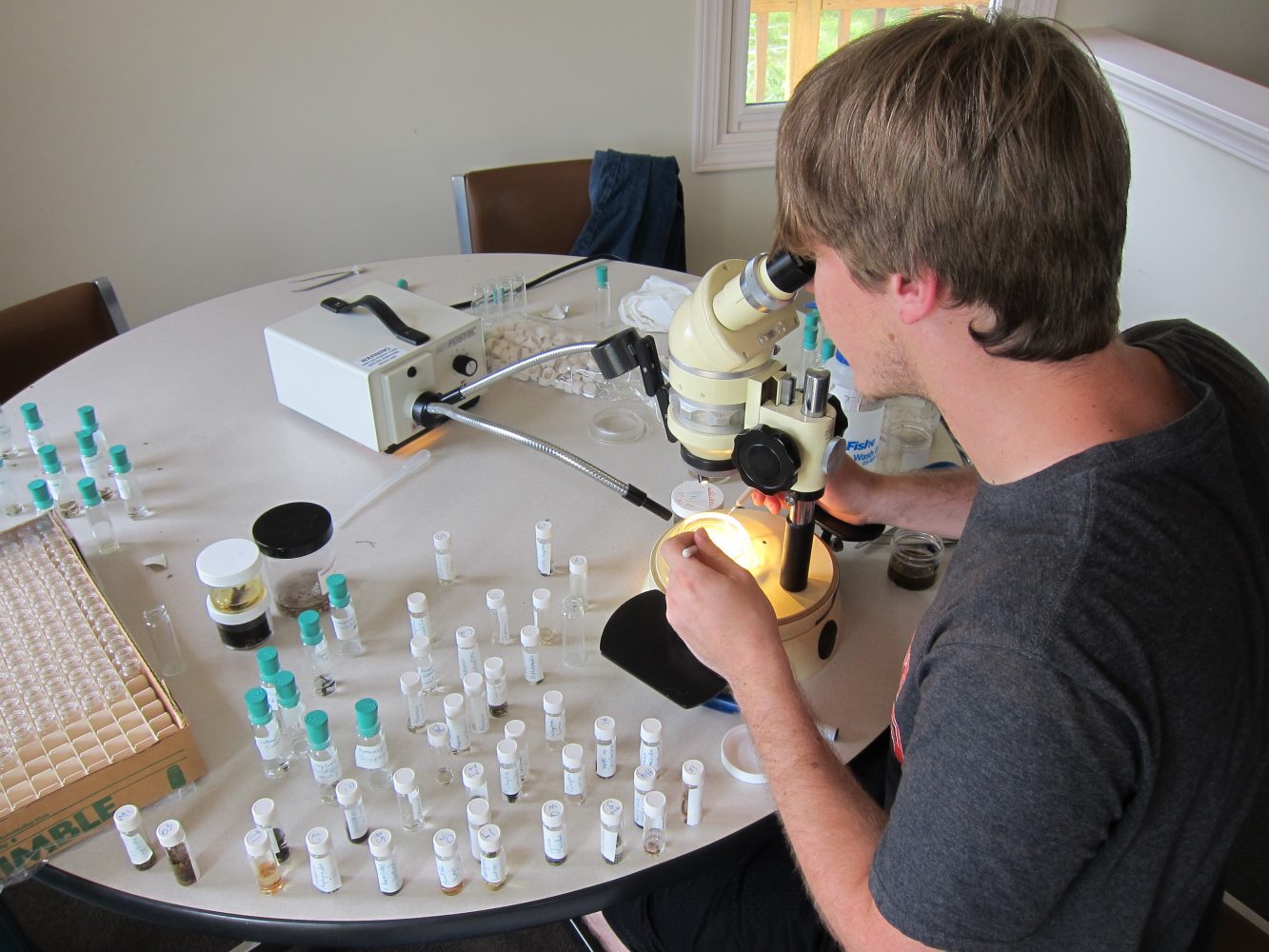Student researchers from nine science departments presented their summer research projects in DeVries Hall lobby on Oct. 23, 2015. Eighty-five students participated in summer research to be presented — exploring facets of biology, chemistry, computer science, engineering, geography/geology/environmental studies, math, nursing, physics and psychology alongside faculty members.
Senior Jacob Swineford worked at Flat Iron Lake preserve, studying arthropods (invertebrate species) with professor Dave Warners. “My project … focused on the effects of prairie burns on arthropods,” Swineford said. The project is a continuation of research from last year. “I collected insects and then identified them to calculate the diversity of both sides [those on the burned side vs. those on the unburned side] and compared it with last year’s results.”
“Research is difficult,” Swineford said. “In some cases it can be very tedious.” (He recalls collecting—and counting—450 ants in a single sample this summer.) “It takes time and patience—and discipline.” He looks forward to the poster fair and the opportunity it will present to observe other students’ research. “I’m excited,” he said, “because being at Flat Iron Lake all summer, I didn’t get a good idea of what everyone else was doing — it’s a pretty isolated environment.”
Junior Anna Michmerhuizen, who will be presenting her nanomolecular research, echoed his sentiment: “In the summer we do a lot of work with students researching chemistry/biochemistry,” she said, “but here we get to see stuff that people off campus have been doing.” Michmerhuizen presented at last year’s poster fair as well, and enjoyed the collective nature of the event. “It was really cool to see what other people had done and also to share my research. The poster fair was a good avenue for that.”
Michmerhuizen studied with professor Douglas Vander Griend, researching complex chemical solutions to characterize binding interactions. “The project that I’ve worked on for the past two summers is a macrocyclic molecule — triazophene — that can hydrogen bond with halides in the centre [of the molecule],” she said. The project involved collaboration with the lab at Indiana University. “We did spectrophotometric titrations — which is a more complex way of saying we make a bunch of different solutions and measure their absorbance [of visible and UV light].”
Senior Deanna Geelhoed is presenting at the poster fair for the first time this year. She worked with fellow senior Micah Warners and a local high school group — the Green Team — to plant rain gardens and collect seeds. The project is associated with Plaster Creek Stewards, and particularly with their primary objectives of education, restoration and research. Geelhoed and Warners taught the high schoolers about native plants and green infrastructure.
This research was “definitely more people-oriented [than academic],” Geelhoed said. For the high school students, it was an opportunity to experience a part of the post-secondary life.
“It’s more than a job for these [high school] students — it’s to get them outside and promote job skills,” Geelhoed said. “The main objective of the Green Team is to promote higher education after high school. [The high schoolers] shadowed research students over the summer — they said that was one of the more impactful things [from their experience].”
For Geelhoed, the experience was impactful as well: “It’s very rewarding work — it’s really awesome to get to know people in all walks of life. Working with the [high school] students was the most valuable part,” she said.
Swineford feels the same way: “Ultimately, when you’re looking at the final product it’s humbling … but also very rewarding, knowing you’ve contributed in some way.”









